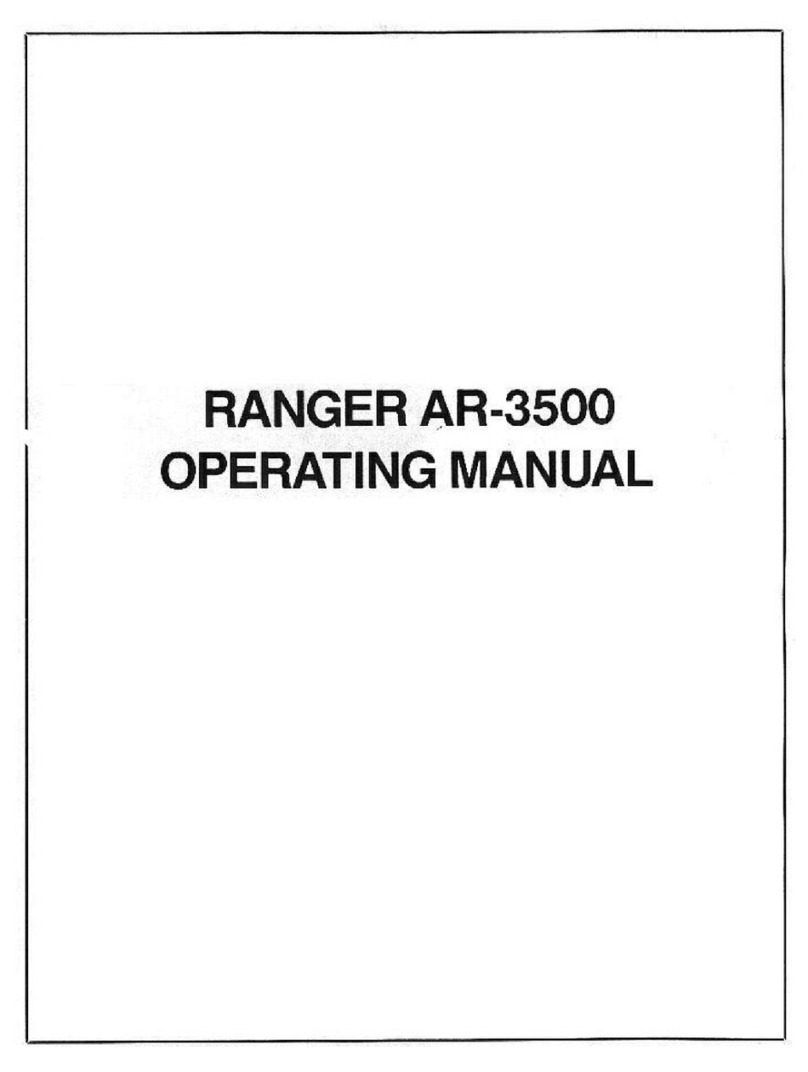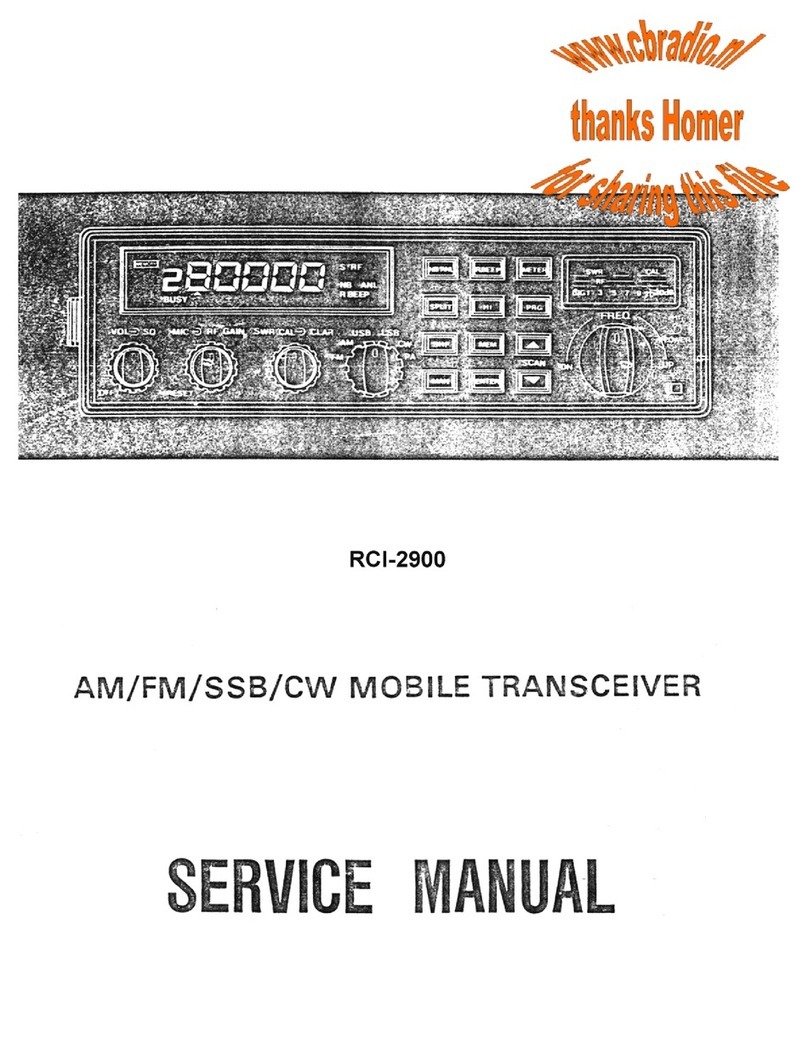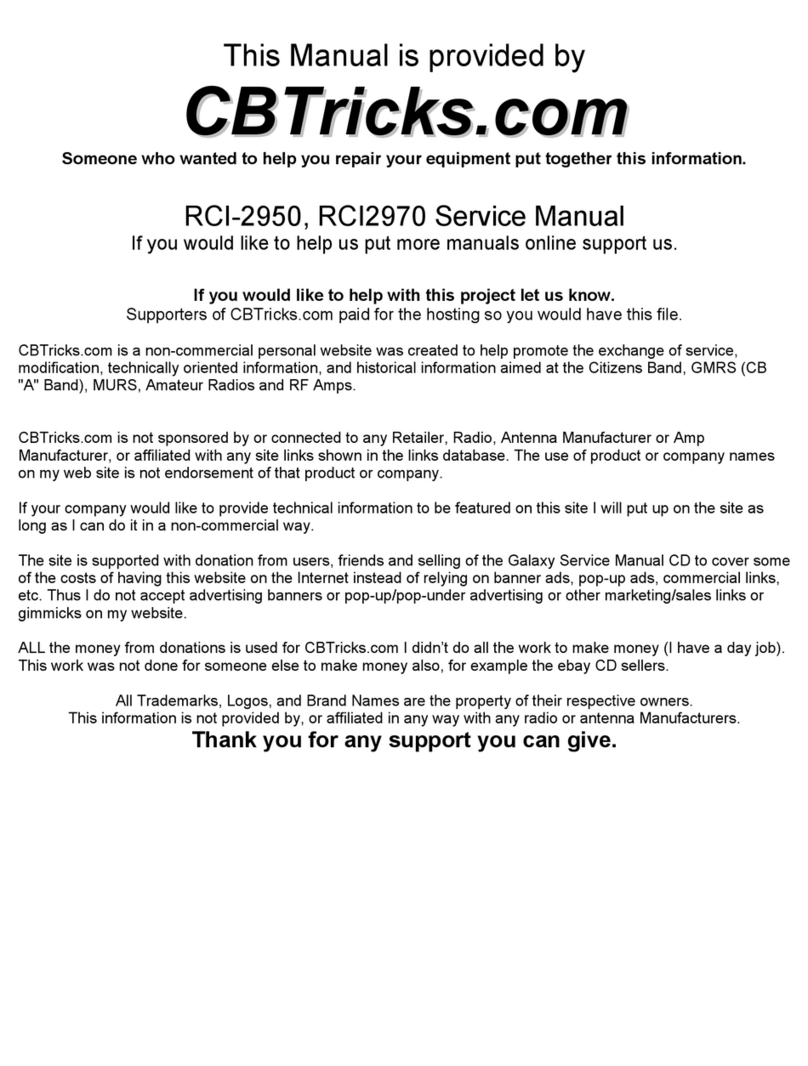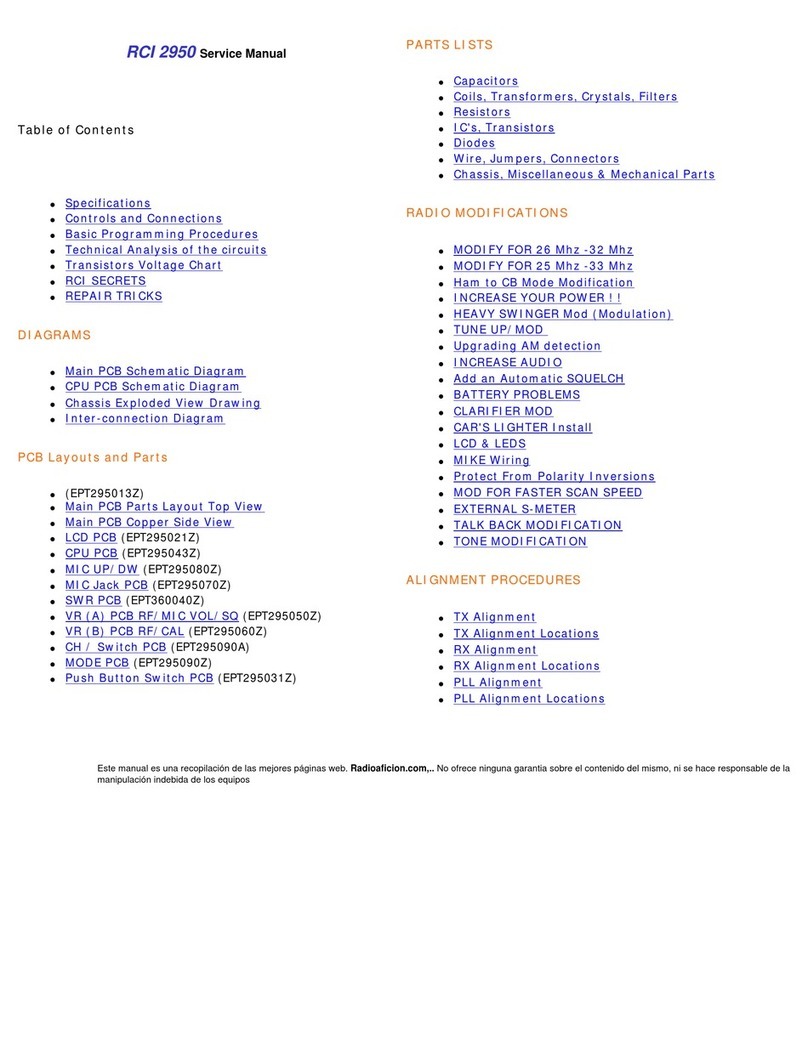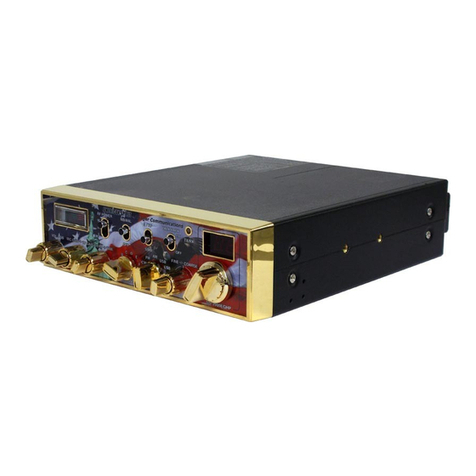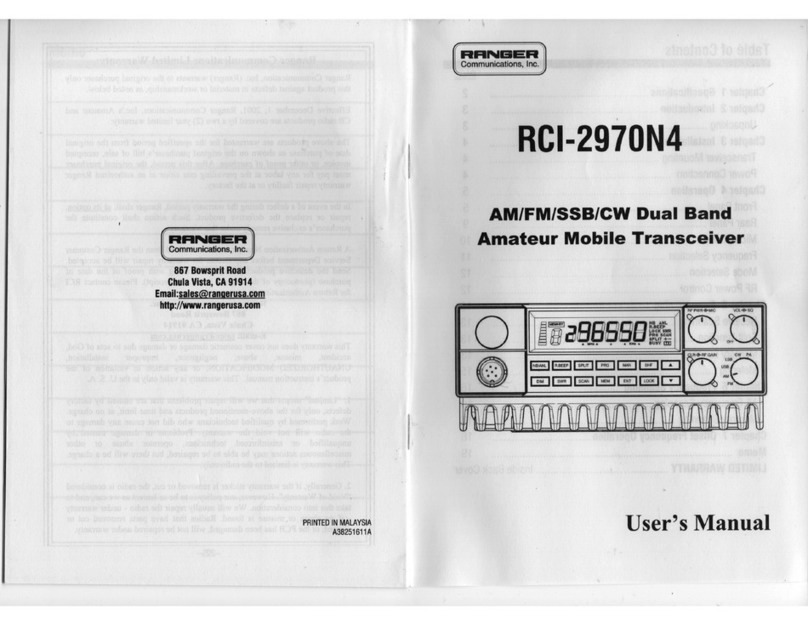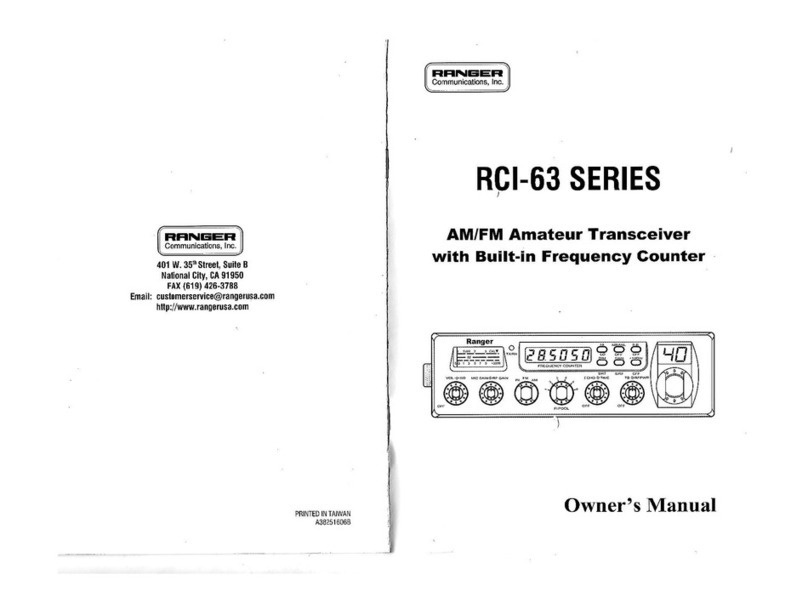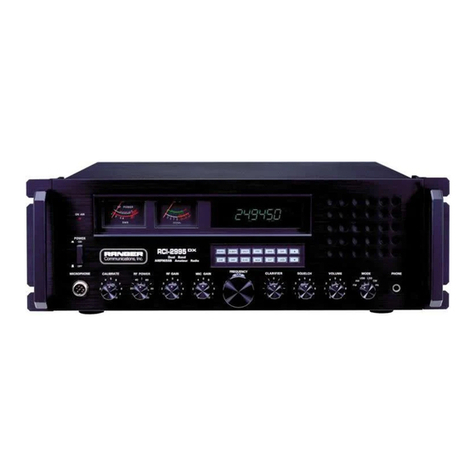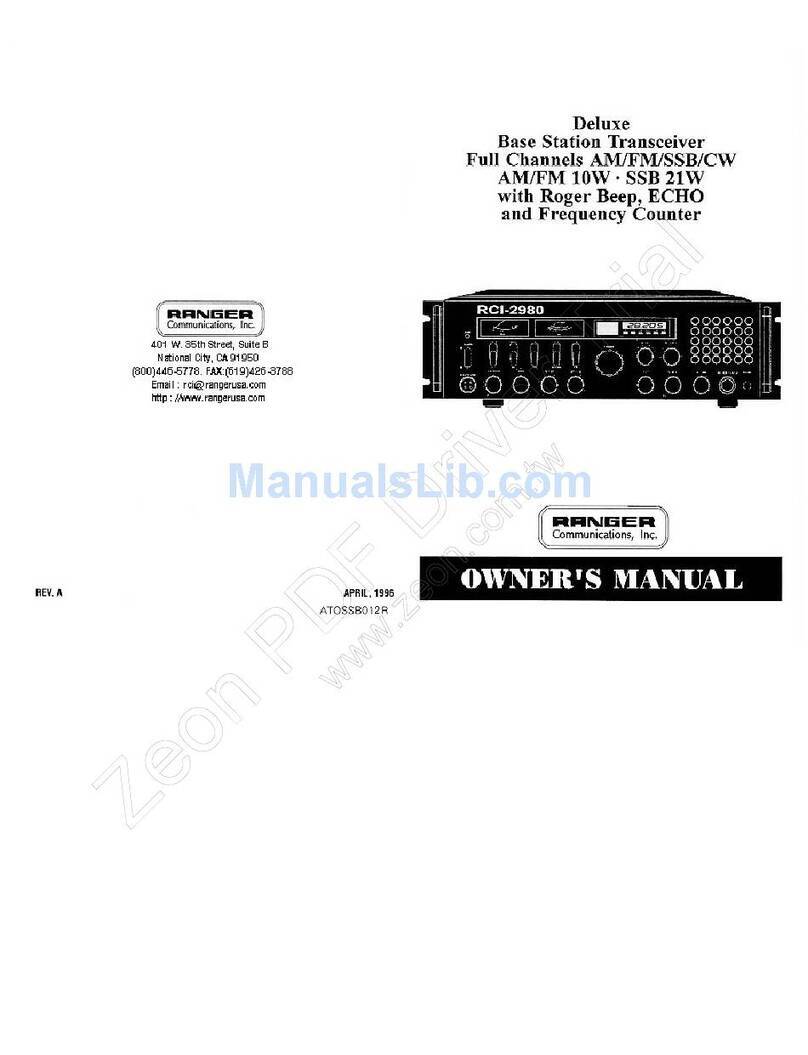Fre
q
uency Scannin
g
(Continued)
I
Frequency scanning can be achieved by either of two methods: the first
method involves scanning of aI frequencies between a pie-set upper and
lower scan frequency. The second method permits the scanning of
frequencies previously programmed in the memory locations 0 thru 9.
AWFrequency scanning
To allow All-Frequency scanning, the user must first program the upper and
lower scan limit frequencies as follows:
1.
Press the PRG (Program) key.
2.
Press the SCAN key. ('"PIRG SCAN+' should appear in the lower right-
hand corner of the display window.)
3.
Using the SHE key and the UP and DOWN arrows, select the upper scan
limit frequency.
4.
Press the SCAN key again. (SCAN-" should appear in the display
window.)
5.
Using the SHF key and UP and DOWN arrows, select the lower scan limit
frequency, then press ENT.
The upper and lower scan limits have now been programmed. To activate
the scan feature, return the radio to manual operation and press the SCAN
button. If the display shows "SCAN+, the radio will scan from the lower
limit to the upper limit. If "SCAN-" is displayed, the unit will scan from the
upper limit to the lower limit. To change from SCAN+T' to "SCAN-" or vice
versa, press SCAN.
NOTE
Whichever upper and lower scan limits are programmed in, are
also the upper and lower
operating limits of the radio. The radio
will not operate
above or below the scan limits last programmed
in. Full band coverage can be returned by
reprogramming
the
original band edges.
Memory
Scanning
The RCI-2970N2 has 10 non-volatile memory locations which can be
programmed with any frequency within the operating range of the radio. The
scan function of the unit can scan the frequencies in the 10 memory
locations.
The first step in utilizing the memory scan function is programming the
desired frequencies into the memory locations 0 through 9 by performing the
following steps:
1.
With the radio operating in the manual mode, press the PRG (Program)
key.
2.
Press the MEM key. 'PRG" should display in the lower right-hand corner
of the LCD display. MEM" should display in the upper left portion of the
display. A number between 0 and 9 will display directly below MEM. This
number represents the memory location currently being shown on the
frequency display. Pressing the MEM key will increase the memory
counter to the next memory location and the frequency in that memory
location will be displayed.
3.
Set the new frequency to be stored in the memory location displayed by
using the SHF key and the UP and DOWN arrows. After the desired
frequency is indicated, press ENT. This will overwrite whatever frequency
had been previously stored at this location.
4.
Repeat steps 2 and 3 for all of the memory locations to be programmed.
5.
After the desired memory locations have been programmed with
frequencies, return the unit to the manual mode of operation by pressing
the MAN key.
6.
To initiate memory scanning, press MEM and then SCAN. The display will
show
I*SCAN+1r
or "SCAN-" to indicate whether the radio is scanning from
the lowest to the highest memory location or vice versa. To return the
radio to normal (non-scanning) operation, press the MAN key.
-15-
-16-
